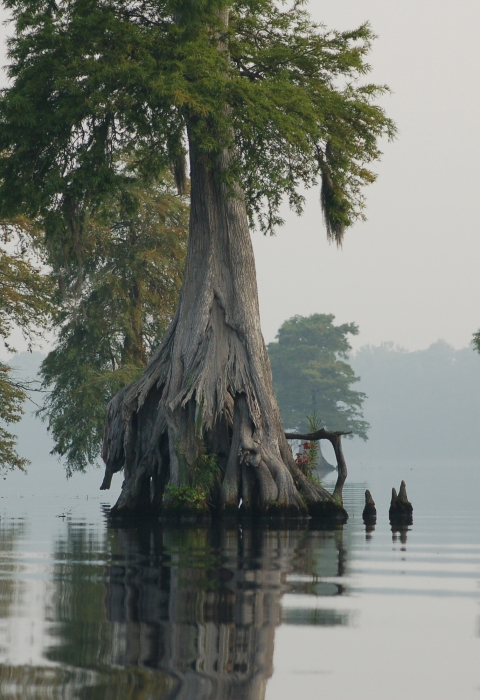What We Do
The U.S. Fish and Wildlife Service (Service) is the principal federal agency tasked with providing information to the public on the status and trends of our nation's wetlands. Through the National Wetlands Inventory (NWI), we provide detailed information to the public on the abundance, characteristics, and distribution of American wetland and deepwater habitats, as well as changes in these habitats through time. This information is provided through two primary datasets: the wetland geospatial dataset and wetlands status and trends reports.
Geospatial Dataset
The wetland geospatial dataset is a digital representation of the location, type, and extent of the nation’s wetland and deepwater habitats. The dataset supports an array of applications, including the U.S. Endangered Species Act, water quality modeling, infrastructure development planning, waterfowl population modeling and more. The dataset is publicly available via the online Wetlands Mapper, a trusted resource that is visited by more than half a million users annually. The Wetlands Mapper allows users to view, query, and print wetlands data.
Data can also be downloaded or accessed through web mapping services. In addition, the Service has developed online tools and other resources aimed at supporting analysis of the geospatial dataset, and provides technical expertise to users as needed.
Data are available for the conterminous United States, Hawaii, Puerto Rico, the Virgin Islands, Guam, the major Northern Mariana Islands, and more than 40 percent of Alaska. This has been accomplished by working with numbers of public and private cooperators. Currently, efforts are underway to complete, update, and maintain the seamless digital wetlands data set for the nation. This effort constitutes the Wetlands Data Layer of the National Spatial Data Infrastructure, and is National Geospatial Data Asset as identified by The Federal Geographic Data Committee (FGDC).
Status and Trends
Wetlands Status and Trends reports comprise the monitoring component of the NWI Program. These reports provide critical information on recent and historical changes in wetland and deepwater habitat type and acreage at both the national and regional levels. The reports provide valuable information on the effectiveness of current policies and management strategies, and guide the development of new U.S. aquatic resource policies.
To date, five national reports and seven regional reports have been completed, including reports on coastal watersheds and the Prairie pothole region. NWI is currently in the process of completing the sixth national report due for publication in 2022.
Our Laws and Regulations
The Emergency Wetlands Resources Act of 1986 requires the Secretary of the Interior, through the Director of the U.S. Fish and Wildlife Service (Service), to map and digitize the nation's wetlands and to archive and distribute the data. It further requires the Secretary to produce national wetlands status and trends reports to Congress.
The Clean Water Act authorized for wetlands mapping to provide information to States to assist in the development and operation of programs under the Act.
The Fish and Wildlife Coordination Act authorized the Secretary to provide assistance to, and cooperate with federal, state, and public or private agencies and organizations in the protection of all species of wildlife and their habitats and to make surveys of U.S. lands and waters and to accept funds for purposes covered in the Act.
The Office of Management and Budget Circular A-16 requires the Department of the Interior, through the Service, to coordinate the Wetlands Layer of the National Spatial Data Infrastructure under the coordination of the Federal Geographic Data Committee (FGDC). Other OMB Circulars also apply. The Service is responsible for producing and maintaining the Wetlands Layer of the National Spatial Data Infrastructure (NSDI), which is a major component of the Department of Interior's geospatial line of business portfolio and E-government, and identified as a National Geospatial Data Asset (NGDA) by the FGDC on GeoPlatform.gov and Data.gov.



